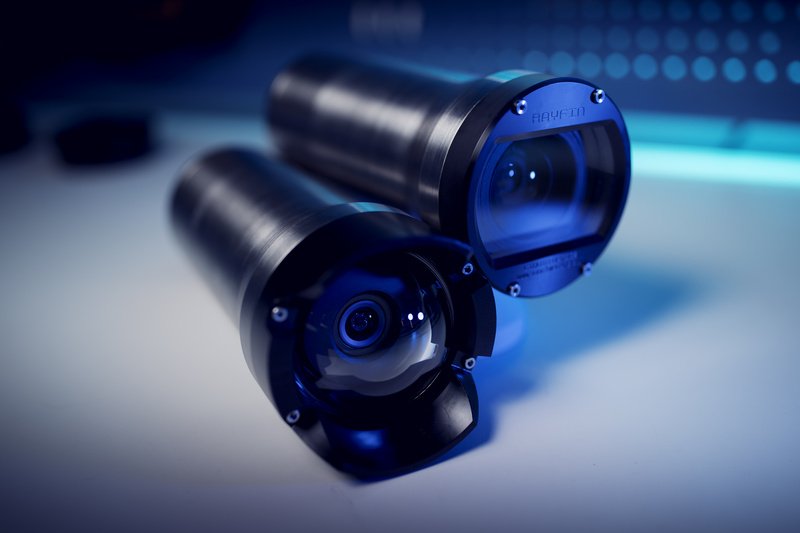What's the Difference Between HD and 4K Subsea Cameras?
Subsea cameras are used for various marine research and studies, underwater inspection, and oceanography exploration. Subsea cameras come in various resolutions, including HD and 4K. In this article, we will delve into the differences between HD and 4K subsea cameras and how to choose the right one for your application.
What is Video Resolution?
Video resolution refers to the number of pixels that make up each frame of a video. In other words, it measures how many individual dots of color are on the screen. The more pixels there are, the more detailed and realistic a video will look. This is because a higher pixel count allows for more information to be displayed on the screen, which in turn creates a sharper and more vibrant image.
Video resolution is typically measured in a 16:9 aspect ratio, which is the standard aspect ratio for most TVs and computer monitors. This ratio refers to the width and height of the screen, with the first number representing the width and the second number representing the height
What is an HD Subsea Camera?
An HD subsea camera is a type of camera designed for underwater use that captures video footage in high-definition (HD) resolution. HD cameras have a resolution of 1920 x 1080 pixels, which is approximately five times more detailed than standard definition (SD) cameras.
HD cameras are typically used for underwater inspections and scientific research, where high-quality video footage is needed to analyze underwater conditions and study marine life. They are also commonly used in industries such as oil and gas, where inspections of subsea equipment and infrastructure are critical to maintaining safety and preventing environmental damage.
What is a 4K Subsea Camera?
4K subsea cameras (also commonly called Ultra High Definition or UHD) are cameras that can record video footage in 4K resolution. 4K resolution refers to a horizontal display resolution of approximately 4,000 pixels. The resolution is four times higher than that of HD cameras. 4K subsea cameras capture a higher amount of detail than HD cameras.
Subsea 4K cameras are typically used for more specialized applications where extremely high-quality video footage with rich colour and contrast is required. For underwater inspection and maintenance, a 4K subsea camera allows inspectors to identify even small cracks, corrosion, or damage. In marine biology and oceanography, 4K capabilities can help provide a more detailed understanding of the behavior and habitats of marine creatures, as well as the characteristics of underwater ecosystems. In underwater filming and photography, 4K cameras are commonly used in underwater filming and photography for documentaries, movies, and television shows. The high resolution allows for stunning underwater imagery and can provide a more immersive experience for viewers.
How is a 4K Subsea Camera Different From the HD Version?
The primary difference between the 4K subsea camera and the HD version is their resolution capabilities. 4K subsea cameras offer four times the resolution of HD cameras, allowing them to capture more detail and produce higher-quality images. This higher resolution also means that 4K cameras can capture more information, making them ideal for certain applications.
For HD, 1080p refers to the total number of pixels running across the screen vertically (there are 1080 pixels). 4K refers to the number of pixels running across the screen horizontally (there are almost 4000 pixels).
4K or HD? Factor to Consider
There may be situations where an HD subsea camera is sufficient and others where a 4K subsea camera would be necessary. Here are some factors to consider:
Cost: 4K subsea cameras are generally more expensive than HD cameras, so if budget is a concern, an HD camera might be a more viable option.
Depth of field: If the subsea environment being filmed is relatively shallow and lacks intricate detail, then an HD camera might be sufficient to capture the necessary footage. However, for deeper dives where there may be more detail to capture, a 4K camera may be necessary.
Purpose: The intended use of the footage can also be a factor. Underwater inspections, for example, can benefit from the high resolution of 4K cameras, which can capture more detail of subsea structures and allow for better assessment of their condition. On the other hand, HD cameras are suitable for routine maintenance and repairs, as they can provide sufficient detail for these purposes at a lower cost. Ultimately, if a higher level of detail is required, then a 4K subsea camera is the better option.
Available storage: 4K footage takes up a lot more storage space than HD footage, so if storage space is limited, an HD camera may be a more practical option.
Overall, both 4K and HD subsea cameras have their own unique advantages and are suitable for a range of subsea imaging applications. The choice between 4K and HD cameras will depend on factors such as the required level of detail, cost, and data size.
Are There Subsea Cameras That Have Both HD and 4K Capabilities?
There are subsea cameras that have both HD and 4K capabilities. SubC Imaging’s suite of subsea cameras are able to record video and capture stills in both 4K and HD:
Rayfin Mk2 Subsea Cameras
The Rayfin Mk2 Benthic 6000m and Rayfin Mk2 Coastal 500m subsea cameras are both incredibly versatile. They offer both 4K and HD video as well as digital stills, making them perfect for a variety of subsea applications.
With these cameras, you can easily collect the data you need to complete your project successfully, whether you're working in shallower waters or deeper depths of up to 6000m. Both Rayfin models can record and store over 10 hours of 4K video, 40+ hours of HD video, and thousands of digital stills. And, as a data-logger, the Rayfin has built-in depth, tilt and roll sensors, and can store NMEA sensor data.
1Cam Mk6 Subsea Camera
SubC Imaging's 1Cam Mk6 is another advanced subsea camera with both 4K and HD capabilities.It is a compact and lightweight camera that offers high-definition video quality, making it ideal for use in scientific research, marine conservation, and other subsea operations.
The 1Cam uses advanced sensor technology to capture high-quality images and video footage, even in low light conditions. The camera also features 20x optical zoom that enables users to focus on specific objects or areas of interest, providing greater flexibility and control over the imaging process.
Conclusion
In conclusion, subsea cameras have revolutionized the way underwater inspections, scientific research, and other subsea operations are carried out. HD and 4K subsea cameras offer high-quality video footage with different resolution capabilities, and the choice between the two will depend on the specific requirements of the subsea application, including factors such as depth of field, purpose, cost, and available storage. However, there are subsea cameras that offer both HD and 4K capabilities, such as SubC Imaging's Rayfin Mk2 and 1Cam Mk6 subsea cameras. These cameras are incredibly versatile, allowing users to capture high-quality video and digital stills, making them ideal for a variety of subsea applications.








